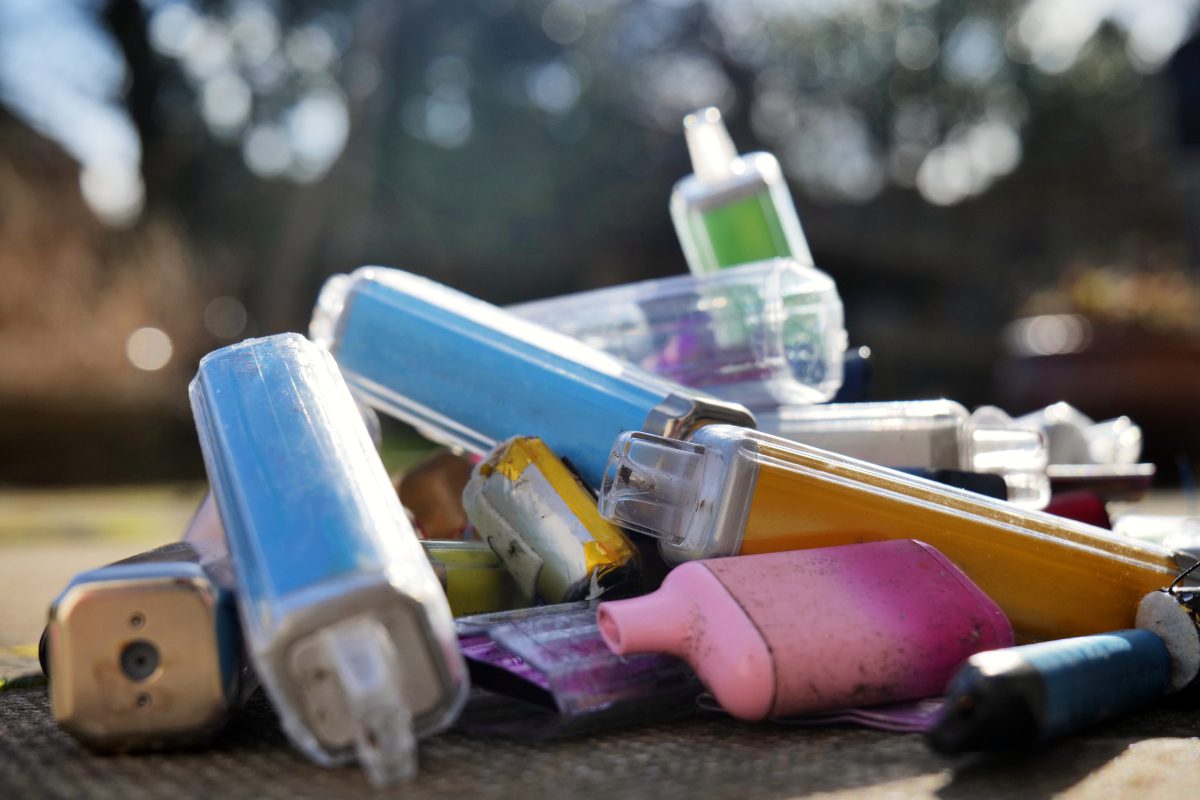
Disposable e-cigarettes or vapes are big business, they are also a big problem for the environment. David Deegan of Tetronics suggests a solution that’s based on plasma technology.
Single-use, disposable e-cigarettes or vapes are a big problem for the environment, one that is toxic. Since their introduction in 2003, initially as a ‘healthy’ alternative to tobacco, they have created a whole new contaminated e-waste stream. In 2023, over 7.7 million disposable vapes were sold every week, and around five million are discarded weekly in the UK, according to research from Material Focus. Despite many vape shops having facilities to dispose of them safely for recycling, only 17% of vapers recycle them correctly. Many find their way into landfill with black bag refuse or are simply thrown onto the ground. In both cases, they cause harm to the environment as they leach nicotine, fire retardants and other chemicals into the ground.
The problem may eventually go away. The government recently announced a ban on sales of disposable vapes in England, Scotland and Wales to discourage vaping among young people. The ban is expected to be implemented by early 2025, after the industry and retailers have been given 6-months’ notice to phase out supply. Northern Ireland will also consider introducing a similar ban. But that still leaves millions in circulation, a substantial threat to the environment, and the need for an interim solution.
There are some businesses already offering disposable vape recovery and recycling, often as part of a broader electrical waste (WEEE) and small mixed electrical waste service. An effective recycling process comprises three main elements: collection and supply of a viable feedstock stream (in this case a large volume of discarded vapes); a dismantling and processing stage (whether mechanical, thermal or chemical); and a commercial outlet for the recovered products. Without all three, it is hard to make a strong investment business case.
Recovering critical metals and materials from more common e-waste, such as PCBs in computers and larger electronics, is easier both to do and to make a business case for. While disposable vapes and e-cigarettes do contain recoverable metals the process is harder and more resource-intensive because they are so much smaller.
Within their small cases, disposable vapes house a heating element, a microprocessor and a battery, plus a cartridge for the liquid. Most casings are made of plastic which, because it is in an electronic setting, will contain flame retardants.
Because the components are very small, they are difficult to recover via mechanical separation – the typical recycling technique that a waste receiver would use to recover materials from e-waste. The scale of electronics in e-cigarettes makes the return on extracting tiny pieces of copper very low. Where there is iron and copper in the vape, the iron might be seen as a rogue element and devalue the copper being extracted. The process is made more difficult and potentially toxic because of any residual vaping liquid and flame-retardant plasticisers. In addition, a lot of these complex chemicals will be classified as persistent organic pollutants. In short, disposable vapes are not easy to recycle within a normal e-waste process but are highly damaging to the environment if they are not recycled.
One solution to this dilemma is plasma. Plasma is omnivorous – it can destroy plasticisers and plastics and render vaping liquid harmless. It is a proven way to extract critical materials from spent devices, prevent hazardous waste reaching landfill, and create a beneficial by-product.
Plasma is an electrically charged – or ionised – gas. Sometimes described as the fourth state of matter, it occurs naturally in the environment in lightning, sparks from static electricity and the aurora borealis. Plasma is widely used in television and display screens, fluorescent lighting and even arc welding.
Tetronics uses plasma technology in an extensive range of applications from recovering precious metals in catalytic converters to removing the toxicity of industrial materials like asbestos and air pollution control residues.
To recover critical metals from electronic equipment, the process Tetronics uses involves introducing the materials – the e-cigarettes and vapes – into a sealed furnace and employing a plasma arc to apply intense heat and ultra-violet light in a controlled environment. The chemistry separates and recovers the valuable metals, minerals and other materials from the feedstock.

Rather than extensive and labour-intensive dismantling of the component parts, plasma can address the complete vape. The plasma process produces liquid metals which can be tapped off for recovery and reuse, while the inorganics – the plastics, polymers and plasticisers – become a fuel source, and the vape liquids are ultimately exhausted as safe gases in line with emissions protocols.
The Tetronics process denatures any toxic elements into a non-hazardous glass-like material called Plasmarok. Another useful by-product is the energy produced, which can be used to power the recycling process. Nothing is wasted. Furthermore, plasma is powered by electricity which, when sourced from renewables, makes it one of the cleanest thermal processing technologies available.
It is very important to consider the batteries used in disposable vapes. Lithium-ion batteries are used to power a vast range of electrical equipment from electric vehicles to electric toothbrushes. They are ideally suited to recharging and there have been several studies into the rechargeability of the batteries discarded in disposable vapes. Ideally, the production, sale and disposal loop for single-use vapes would be sufficiently closed for these lithium batteries to be re-used up to 300 times, thereby avoiding thousands of tonnes of harmful waste going to landfill. Unfortunately, however, the multi-stage, multi-national supply chain is not that coordinated yet and, with a ban looming, it is unlikely to reach full circularity.
That shifts the focus from recycling and reuse of whole batteries to recovery of the lithium within them; a highly specialised process in which plasma can also play a role. In the Tetronics process, the lithium would be partitioned from the other vape components into the inorganic phase, the Plasmarok. At the very least, the lithium contained within this inert glass is now immobile, removing the potential for explosion or pollution.
Better still, the Plasmarok represents an intermediate source of lithium; providing a raw feedstock for the lithium refining process. Plasma becomes part of the broader supply chain for recovering lithium to make new batteries and add to a robust circular economy for critical materials.
At present, alongside the ban on sales of disposable vapes, the government is exploring regulatory mechanisms to promote the recovery of critical minerals from waste. Defra is actively looking at ways to ensure the producers of vapes properly finance recycling costs when they become waste.
There does need to be a concerted effort to address disposable vapes that involves the recycling sector and more importantly the suppliers – both producers and retailers. They need to take more responsibility for reducing waste and harm to the environment. Were retailers to incentivise people to return disposable vapes, especially younger users, this could have a big impact on the number being carelessly discarded while increasing the volumes available for mineral recovery, and making the whole loop a more sustainable investment.






